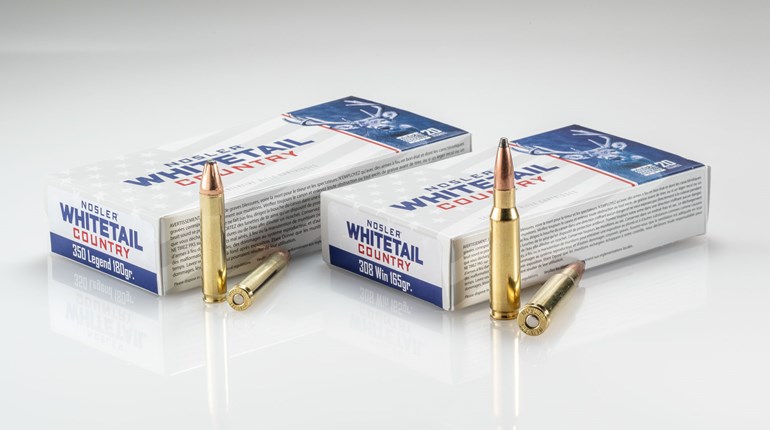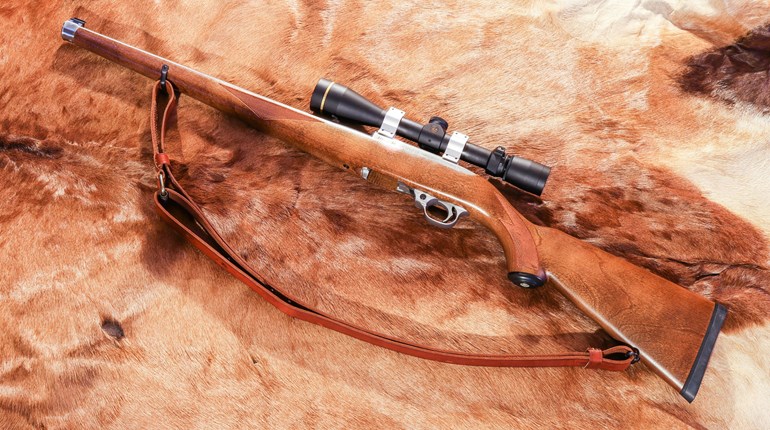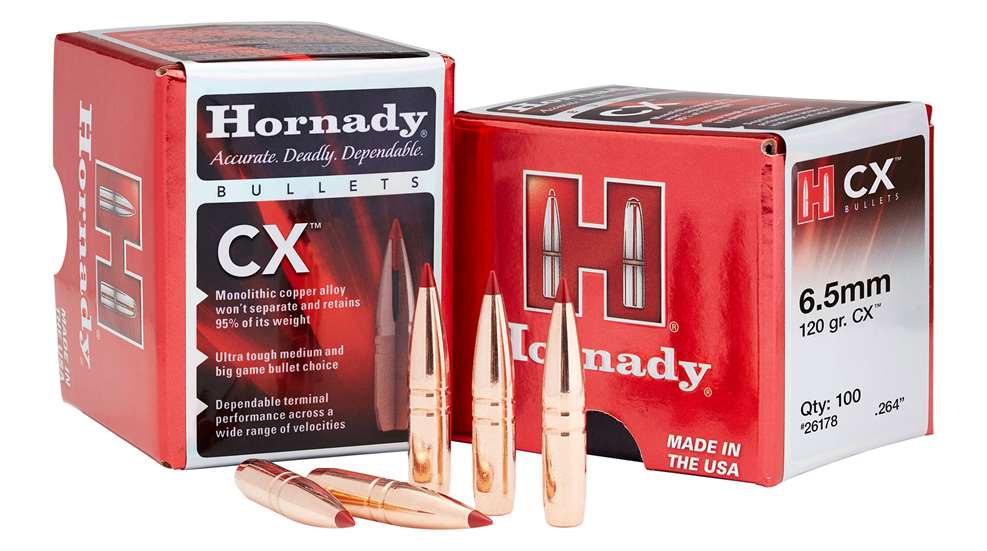
No matter how fancy the rifle or scope may be, the only part of the rifleman’s gear which will touch the game animal is the bullet you choose. And while there are some designs which have been with us for well over a century, there have been some incredible advancements in bullet technology over the last few decades. Where our projectiles started as simple round lead balls slightly smaller than the bore of the firearm, patched to create a gas seal, things have certainly changed. Modern rifle projectiles have copper jackets over lead cores—sometimes chemically bonded together—and some have the lead core removed altogether, leaving a homogenous bullet made of a copper alloy.
While Hornady wasn’t the first on the market with a monolithic bullet, it has been at the forefront of bullet technology. Its GMX bullet (Gilding Metal eXpanding) was released in 2009 and made a great choice for those who prefer a monolithic, lead-free bullet, or are required by law to use lead-free projectiles. Using the signature red polymer tip, the GMX was an accurate bullet, hitting hard and retaining the greater majority of its weight. But, Hornady is not a company content to rest upon its laurels; when it sees room to improve its products, it makes the effort to do just that. Welcome the Hornady CX bullet.
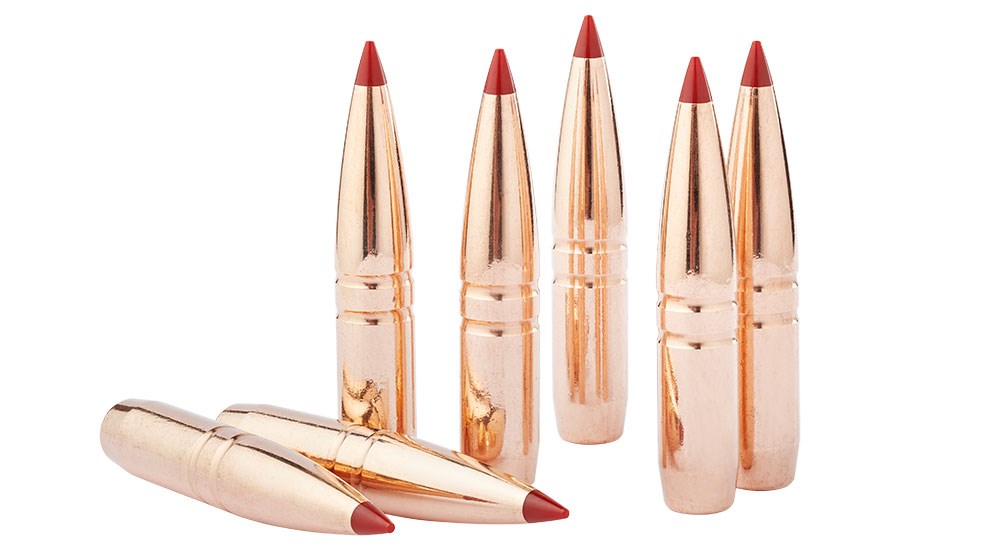
This bullet is, by Hornady’s own words, an upgrade of the GMX. Hornady’s ballistic engineers took a look at all the attributes of the older GMX design and made some key changes which had an effect on downrange trajectory and terminal performance. The new CX bullet (standing for Copper alloy eXpanding), being made of lead-free copper alloy, will be longer than a lead-core bullet, as copper is less dense and lighter than lead. Early lead-free bullet designs had some issues with both pressures and copper fouling, and it’s been proven that reducing the amount of bearing surface can make a definite improvement in both areas. Cutting grooves into the shank of the bullet—in the fashion of naval shells—helps to reduce the internal pressures and minimize fouling. But having nice square edges on those grooves doesn’t exactly help the bullet’s ballistic coefficient, and that means things suffer downrange.
Looking to improve the design and reduce the drag, Hornady has revised the geometry of the grooves (there appears to be a radius in the groove) to maximize aerodynamics and allow the CX to carry its velocity farther downrange. The second area Hornady visited was the bullet’s tip. With the GMX, a polymer tip was seated over the hollow cavity of the bullet to initiate expansion upon impact. Hornady’s Doppler radar data showed that the GMX polymer tip was deteriorating in flight due to the heat generated by air friction. To remedy this, Hornady used the same fix that worked so well on the ELD line of bullets: the Heat Shield tip. The flight-generated heat will have no effect on the Heat Shield tip, and that results in maintaining a more consistent BC during flight; a bullet’s BC can and does change as a result of varying velocity, and a consistent meplat results in consistent, repeatable flight paths. Many times we simply call that accuracy.
A quick note about the BC values given for the Hornady CX bullets: You may note, with a bit of research, that the G1 BC values for the CX are slightly lower than those published more than a decade ago for GMX bullets. I suspect this has two causes. First, the BC values of the GMXs may have been slightly inflated due to the means used to measure that fluid, unitless number—not uncommon even a decade ago. Second, Hornady has gotten away from using a static BC value for bullets designed for longer ranges, as they feel a single, average BC is a misrepresentation. Instead Hornady relies on its 4DOF ballistic program, deriving a form factor value for the parameters observed in the real world. That seems to be a much better, and more truthful, means of deriving a projected trajectory. Simply put, not all BC values published are measured in a uniform fashion, and they can be misleading—intentionally or not.
I got my hands on some of the Hornady Outfitter ammo in 6.5 Creedmoor, loaded with the 120-grain CX bullet, with a G1 BC of .428. The Outfitter line is designed for the worst hunting conditions, with nickel-plated cases that will resist corrosion from being handled repeatedly and a sealed primer to keep any and all moisture out of the powder charge. My good old Legendary Arms Works Professional rifle has always been an accurate rig (I’ve only met one rifle chambered in 6.5 Creedmoor that was inaccurate) and with the CX bullet, it continued its streak of digesting factory ammunition.
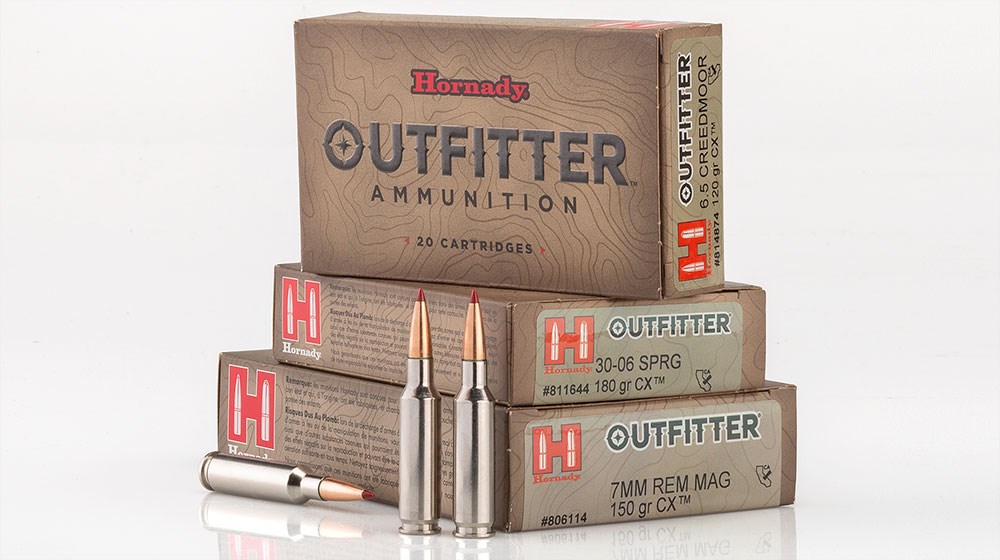
The rifle has historically loved the 135- and 140-grain cup-and-core bullets, but the 120-grain copper CX slugs flew very well, with the largest five-shot group measuring .85 inch at the 100-yard target. Setting up my Oehler 35P chronograph to measure velocities, I observed an average velocity of 2912 fps from the 24-inch barrel; the Hornady box indicates a muzzle velocity of 2925 so things aren’t too far off. For the deer hunter who enjoys the light recoil of the 6.5 Creedmoor, this Hornady CX load should put a smile on your face. With a 200-yard zero, the 120-grain CX will print 1.6 inches high at 100 yards, 7.2 inches low at 300 yards, 21 inches low at 400 yards and 42.6 inches low at 500 yards. At the latter distance, the bullet still has 997 ft.-lbs. of energy; checking all the boxes for those who subscribe to the agreed upon figure of 1,000 ft.-lbs. required to cleanly kill your deer. Long story short, this load provides a weatherproof package with a bullet that is legal in all hunting areas, with minimal recoil and rather flat trajectory, all with high weight retention and deep penetration.
For the record, I was a big fan of the Hornady GMX bullet, as it proved to be a winner at the range as well as in the field. That said, I know the folks at Hornady don’t just rework a good bullet for no good reason. Just as the A-Max bullet was replaced with the A-Tip (and that was a strong step forward), the reworking of the GMX to the CX will show the benefits of the efforts of the Hornady engineers. Based on the performance at the bench, I’m looking forward to taking the CX bullet hunting this fall. I’m sure the deer aren’t too happy, though.

Technical Specifications
• Bullet Type: monolithic expanding copper alloy
• Point: hollow w/Heat Shield tip
• Base: boattail
• Features: high BC; optimized groove geometry
• Calibers/Weights Available: 6mm/80-gr., 90-gr.; .257"/90-gr.; 6.5mm/120-gr.,130-gr.; .277"/100-gr., 130-gr.; 7mm/139-gr., 150-gr.; .308”/110-gr., 165-gr., 180-gr., 190-gr.; .338"/185-gr., 225-gr.; .375/250-gr.
• Available Factory Ammunition: Hornady Outfitter, Hornady Superformance
• Uses: medium-large game
• MSRP per box: $54.99 (6.5 CM Outfitter); hornady.com














